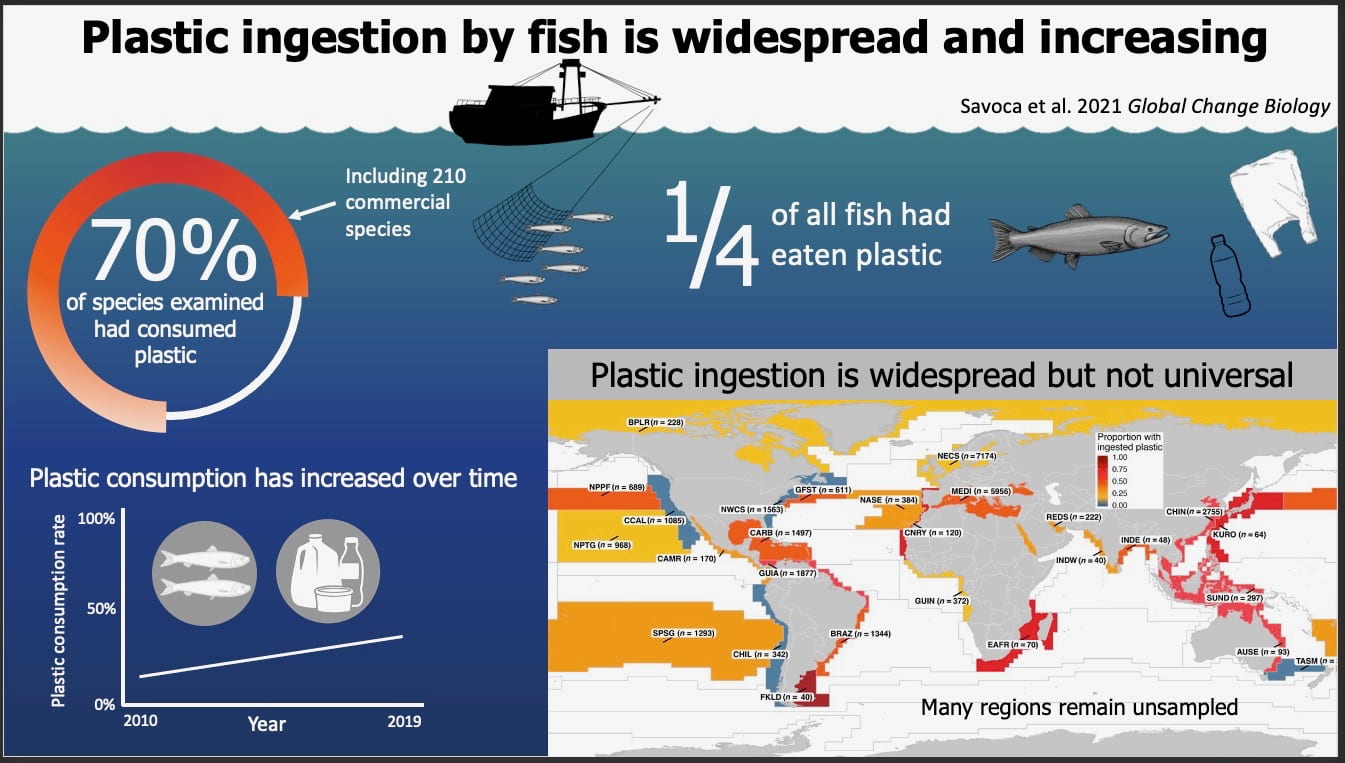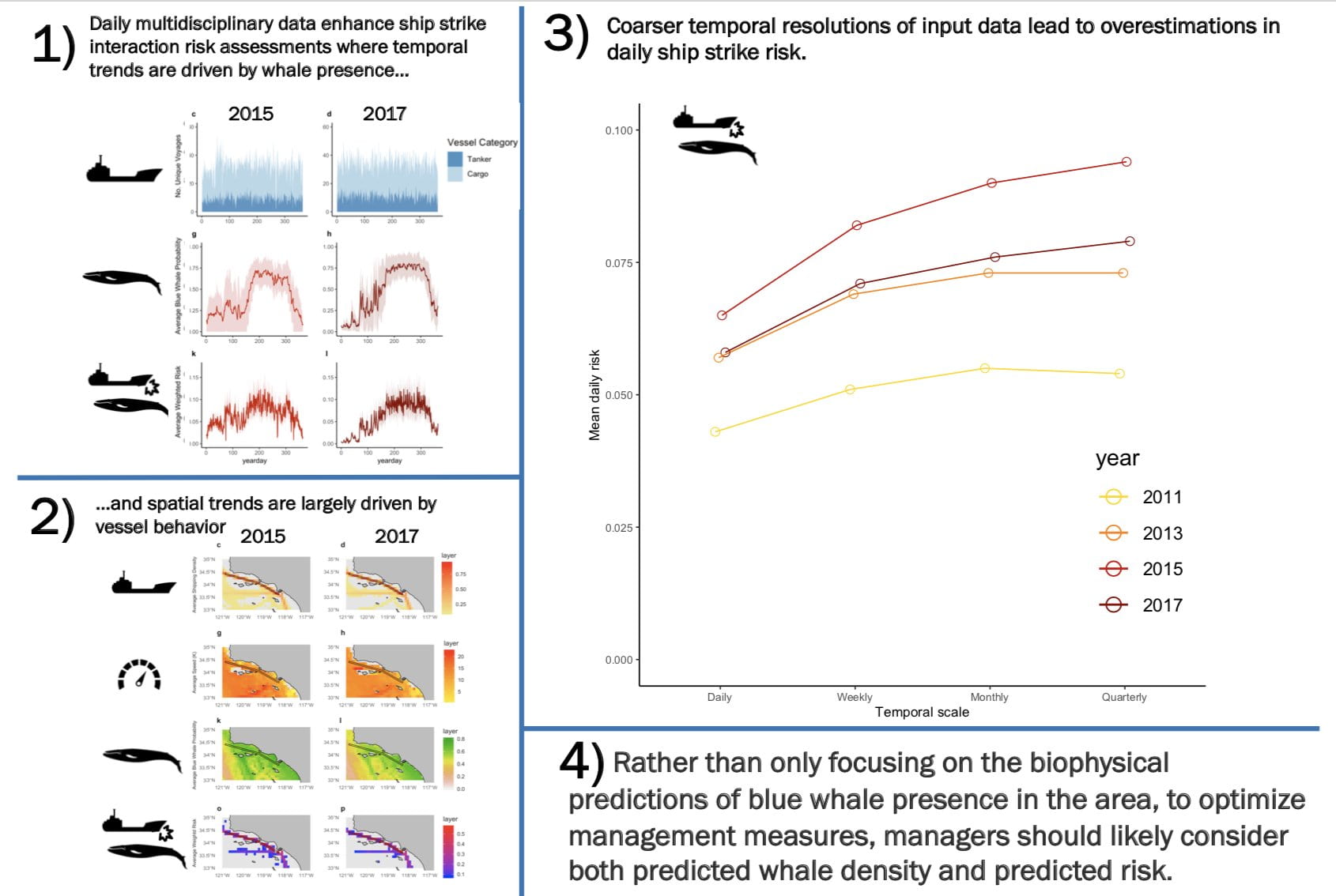As climate variability and change reshapes our oceans, the long-term effectiveness of spatial management approaches such as marine protected areas (MPAs) is increasingly called into question, especially for highly mobile species like whales, sharks, sea lions, and turtles that depend on vast swaths of ocean habitat. In a new study published in npj Ocean Sustainability, Nerea Lezama-Ochoa tackled this challenge by offering a framework to identify future “climate-smart” areas: places that will either continue to support key species despite climate change (climate refugia) or emerge as new strongholds (bright spots). This work used eight ecologically and economically important case study species, projecting how suitable habitat along the US west coast and within four National Marine Sanctuaries (NMS) might shift by 2100 under a high-emissions scenario.



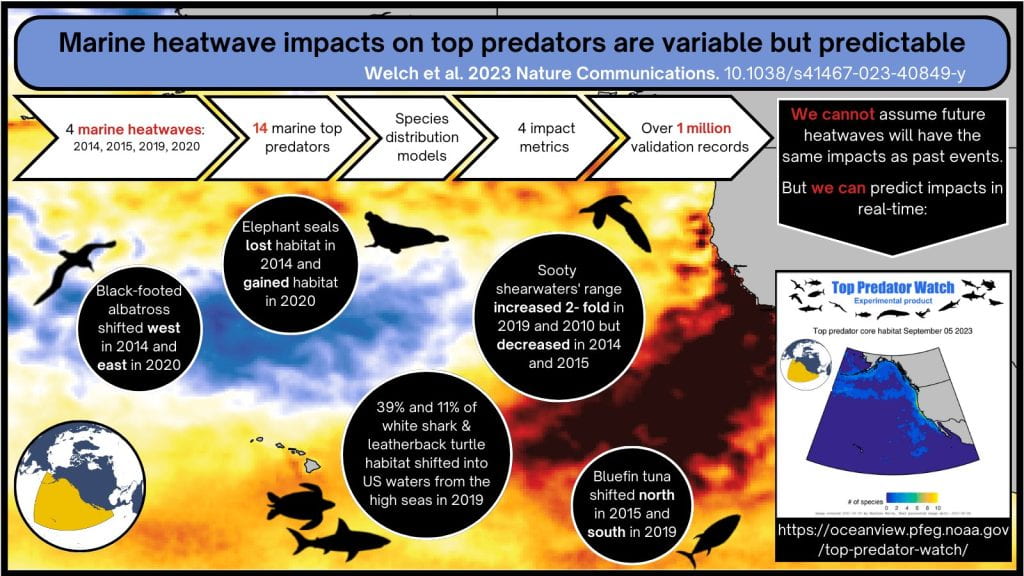
 E.L. Hazen, 2022. Climate change is “heard” in the ocean depths. Nature Climate Change. DOI: 10.1038/s41558-022-01484-5.
E.L. Hazen, 2022. Climate change is “heard” in the ocean depths. Nature Climate Change. DOI: 10.1038/s41558-022-01484-5. 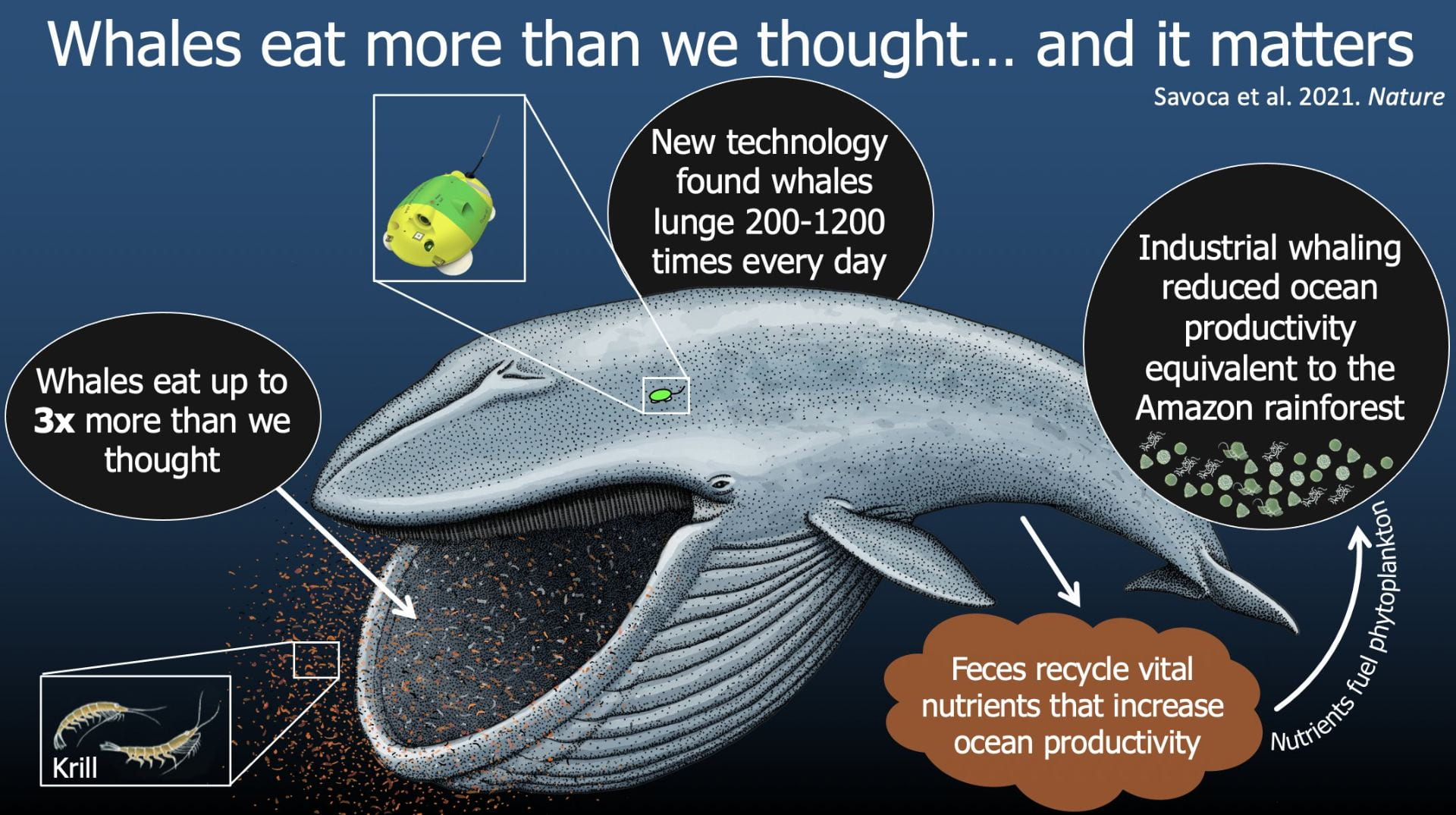 Infographic (c) Stephanie Brodie
Infographic (c) Stephanie Brodie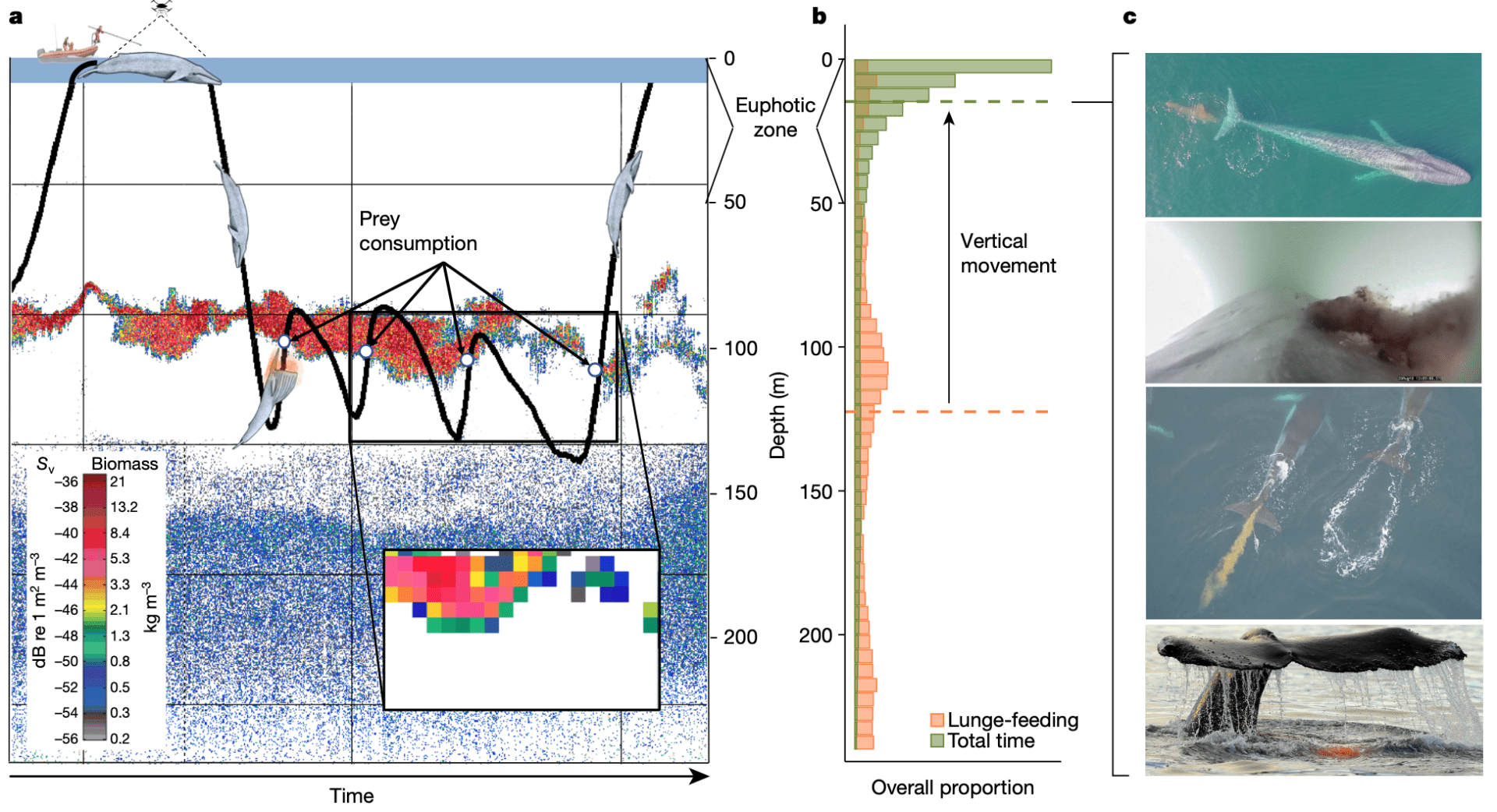 Figure 1. Fieldwork needed to measure whale size, behavior, and the density of the prey they eat. The vertical difference in foraging and feces may redistribute nutrients to keep marine ecosystems flowing.
Figure 1. Fieldwork needed to measure whale size, behavior, and the density of the prey they eat. The vertical difference in foraging and feces may redistribute nutrients to keep marine ecosystems flowing.